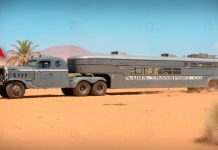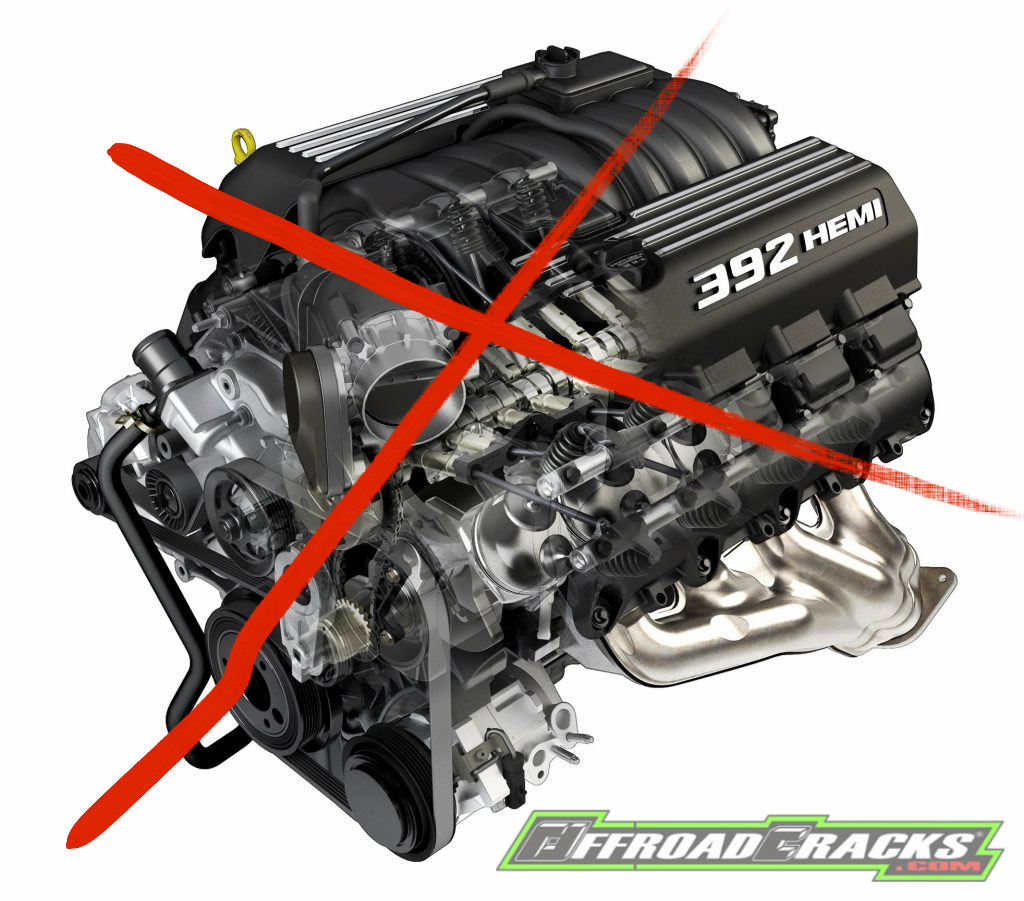
Wir lieben es neue Motorentechnologien auszuprobieren, daran besteht kein Zweifel. Aber verdient ein Reihensechszylinder unsere Aufmerksamkeit und stirbt deshalb der legendäre HEMI V8? Was, wenn es ein V8-Killer ist – ein 500-PS-Twin-Turbo-Reihensechszylinder? Der brandneue Hurricane I6 von Stellantis mag klingen, als wäre er in den 1950er Jahren gebaut worden. Der 3,0-Liter-Twin-Turbo-Reihensechszylindermotor wurde jedoch erst vor kurezm angekündigt, um seine umfassendere Mission zu erfüllen – bis 2038 netto Null-CO2-Emissionen zu erreichen (Teil des Stellantis Strategieplans Dare Forward 2030).
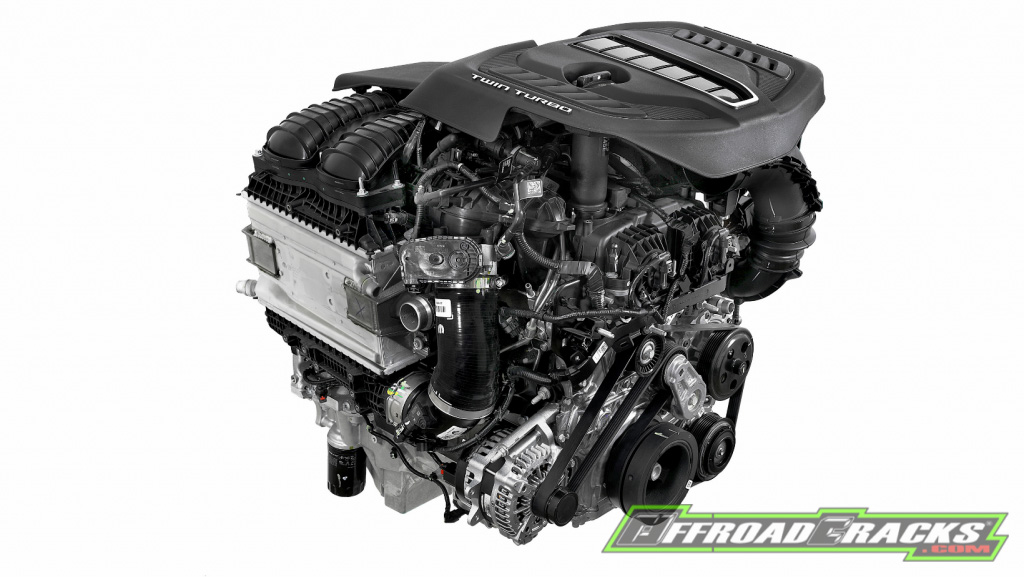
Wir müssen Stellantis (Konzern aus 14 Marken wie beispielsweise Jeep, Ram Trucks, Fiat, Opel, Peugeot, Dodge, Chrysler usw.) Anerkennung dafür aussprechen, dass sie in diesem Umfeld, in dem sich die meisten Hersteller auf Elektrofahrzeuge konzentrieren, überhaupt einen Verbrennungsmotor entwickelt haben. Das Unternehmen sichert ab, dass der US-Markt mit Verbrennungsmotoren noch nicht fertig ist (obwohl Europa eine andere Richtung einschlägt). Der Hersteller verpflichtet sein, sein Angebot zu elektrifizieren – bis 2030 auf mindestens 50 Prozent – was die andere Hälfte für diejenigen übrig lässt, die immer noch Verbrennungsmotoren wollen.
BMW hat sich wie die meisten anderen Hersteller nie gegen Reihensechszylinder-Motoren ausgesprochen. Der N55/S55 war einer der stärksten und effizientesten Reihen-Sechszylinder-Motoren aller Zeiten.
Eine Reihensechszylinder in V-Anordnung hat einige Vorteile. Zunächst einmal ist es aufgrund der ausgewogenen Zylinder und der Zündfolge natürlich ein extrem ruhiger Motor-Lauf. Es handelt sich im Wesentlichen um zwei 3-Zylinder-Motoren, die sich gegenüberstehen. Das inhärente Gleichgewicht ermöglicht eine Kurbelwelle ohne Gegengewichte. Zudem sind sie Drehmomentmonster mit guter Leistung im unteren bis mittleren Bereich, die in 90 Prozent der Fälle im Alltag genutzt wird. Der Jeep 4.0L Sechszylinder gab beispielsweise mehr Drehmoment ab als einige Pendanten mit größerem Hubräumen.
Der Untergang der I6-Konfiguration (I6=Inline sixcylinder = Reihen-Sechszylidner) war hauptsächlich auf die Baugröße zurückzuführen. Sie sind groß und lang und lassen sich nicht leicht in kompakte Anwendungen integrieren. Dies wird jedoch kein Problem für den Hurricane-Motor sein, da es so aussieht, als würde er in größeren SUVs und Lastwagen verwendet werden.
Der Hurricane Twin-Turbo-Reihensechszylindermotor bietet einen besseren Kraftstoffverbrauch und weniger Emissionen als größere Motoren und erzeugt gleichzeitig mehr Leistung und Drehmoment als viele V8-Saugmotoren und aufgeladene Sechszylinder-Triebwerke. Der gezeigte 3,0-Liter-Hurricane Twin-Turbo I-6 Standard Output erzeugt mehr als 400 PS.
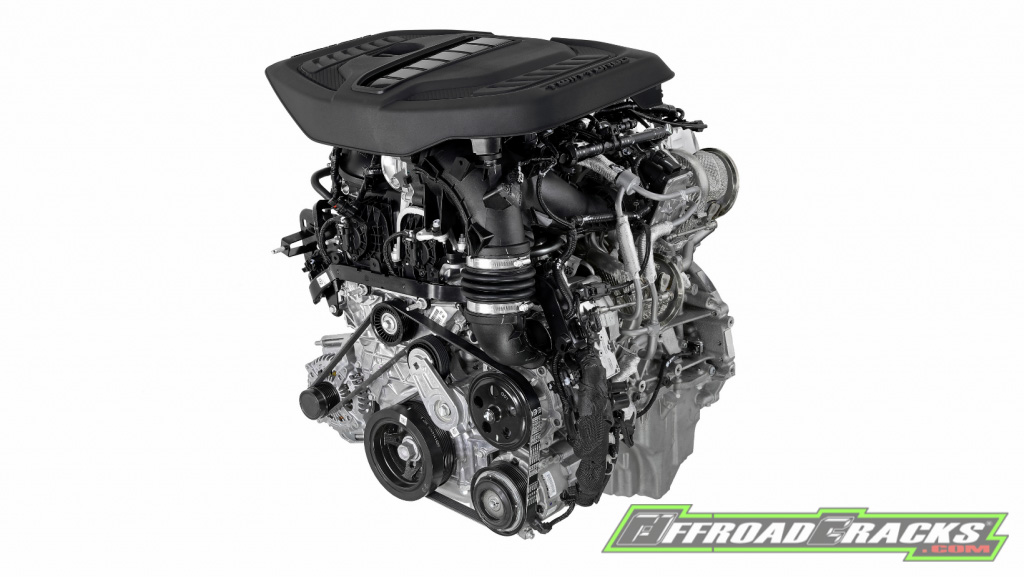
Der Hurricane hat ein breites, flaches Drehmomentband und hält mehr als 90 Prozent seines Spitzendrehmoments schon ab 2.350 U/min bis zur Höchstdrehzahl bereit. Es gibt Gerüchte, dass der Grand Cherokee der erste sein wird, der mit diesem Motor ausgestattet sein wird, wenn auch mit einer Prämie von 2.000 US-Dollar gegenüber dem Hemi.
Ein Aluminiumgussblock mit tiefen Schürzen und einer strukturellen Ölwanne aus Aluminiumlegierung umschließt eine geschmiedete Kurbelwelle und geschmiedete Pleuelstangen, die mit kreuzverschraubten Haltern gesichert sind. Die Blöcke sind ab Werk ziemlich robust, da sie für optimale Zylinderbohrungen (gerade und rund) geschliffen sind, was auch zur Verbesserung der Kraftstoffeffizienz beiträgt.
Dann gibt es die reibungsarme Plasma Transfer Wire Arc (PTWA)-Zylinderbeschichtung in den Bohrungen, um die Wärmeübertragung zu verbessern, indem mehr Aluminium um die Zylinder herum zugelassen wird als bei herkömmlichen Eisenlaufbuchsen. Die PTWA-Beschichtung ist im Vergleich zu einer Graugussbuchse ultradünn und hat eine zehnmal höhere Verschleißfestigkeit.
Der Kraftstoff wird den Zylindern über Hochdruck-Direkteinspritzdüsen (5.075 psi/350 bar) über Pumpen zugeführt, die von einer kettengetriebenen Welle betätigt werden. Die Abgaskrümmer sind in den Zylinderkopf integriert und wassergekühlt. Die Ölpumpe hat eine variable Verdrängungsleistung und kann die Spülung je nach Bedarf anpassen. Mit anderen Worten, diese Motoren haben einiges an besonders interessanten Features.
Der montierte Wasser-Luft-Ladeluftkühler reduziert die Lufttemperatur vor Eintritt in den Ansaugkrümmer. Dies ermöglicht mehr Leistung durch einen vorgezogenen Zündzeitpunkt und hilft bei der Kontrolle der Zylindertemperaturen. Zudem verwendet man auch eine elektrische Pumpe, um das Kühlmittel zirkulieren zu lassen, nachdem der Motor abgestellt wurde – das steigert die Haltbarkeit.
Die aus der Luft- und Raumfahrtindustrie übernommene PTWA-Beschichtung: Man schmilzt im wesentlichen einen Stahllegierungsdraht bei 4.150 Grad Fahrenheit (2287,78°C) und erzeugt mikroskopisch kleine Partikel, die mit hoher Geschwindigkeit auf die Zylinderwände gesprüht werden. Diese feinen Partikel kühlen ab und bilden eine physikalische Verbindung mit der Aluminiumbohrung. Dieser Beschichtungsprozess hinterlässt mehr Aluminium zwischen den Zylindern, was eine bessere Wärmeübertragung und Motorkühlung ermöglicht. Dies ermöglicht eine bessere Einstellung des Luft-Kraftstoff-Gemischs und der Zündzeitpunktvorverstellung über einen weiten Betriebsbereich.
Das Fazit ist, dass in diesen Motoren einige coole Technologien zu finden sind, aber es ist schade, dass wir wahrscheinlich einen frühen Todesstoß für den Hemi erleben werden, wenn Stellantis seine Aufstellung an die aktuellen Emissions- und Kraftstoffsparstandards anpasst. Aber die Zeit wird zeigen, ob es eine neue Lebensader für V8-Motoren gibt. Es lebe der V8-Hemi-Motor!!! 💪💪💪
Hier eine Möglichkeit mit V8-Motoren auf Wasserstoff-Basis die Zukunft zu gestalten: LINK
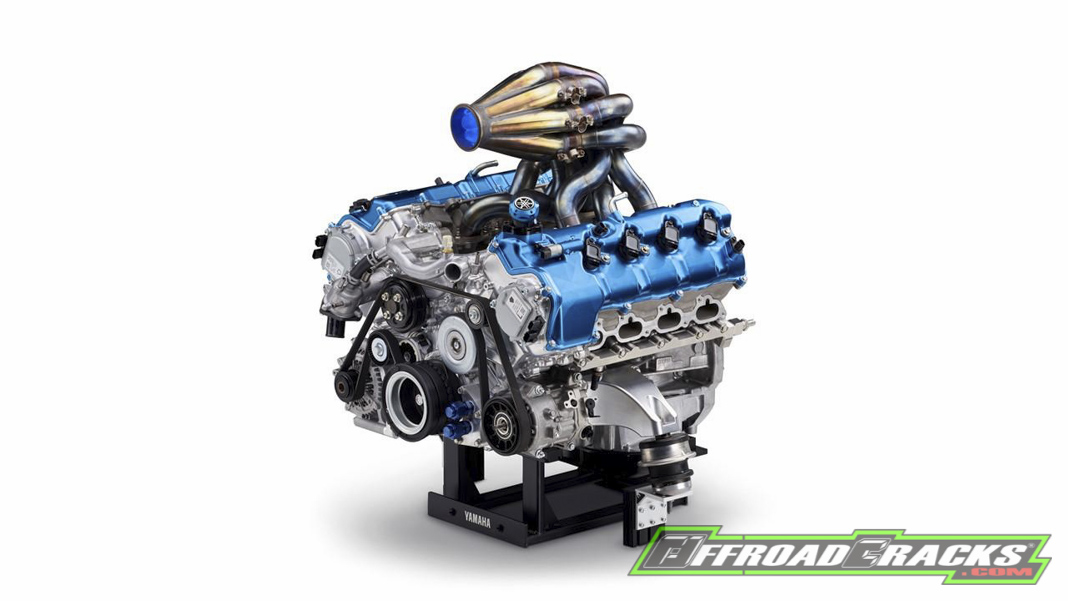
![]()

We love to geek out on new engine technology, no doubt about it. But, is an inline-six worthy of our attention? What if it’s a V8 killing, 500-hp twin-turbo inline-six? Stellantis’ all-new Hurricane I6 may sound like it was built in the 1950s. However, the 3.0L twin-turbo, inline six-cylinder engine was just announced last week to meet its broader mission of reaching net-zero carbon emissions by 2038 (part of its Dare Forward 2030 strategic plan).
We have to give kudos to Stellantis for even developing an internal combustion engine in this environment where most OEMs are focused on EVs. The company is hedging that the U.S. market is not done with ICE yet (although Europe is another story). The OEM notes that it is committed to electrifying its lineup – to at least 50-percent by 2030 – that leaves the other half for those who still want internal combustion.
Stellantis unveiled its new 3.0-liter Hurricane Twin-Turbo inline six-cylinder engine that delivers better fuel economy and fewer emissions than larger engines while at the same time generating more horsepower and torque than many naturally aspirated V8 and boosted six-cylinder powerplants. The 3.0-liter Hurricane Twin-Turbo I-6 HO, shown, generates more than 500 horsepower.

According to Micky Bly, Stellantis’ head of propulsion systems, the Hurricane will play a key role in its portfolio for years to come. “The Hurricane twin-turbo is a no-compromise engine that delivers better fuel economy and an important reduction in greenhouse gases without asking our customers to give up performance.”
The I6 engine configuration has been immortalized in the performance arena through such legendary platforms as the Toyota 2JZ, Nissan RB26DETT, and BMW N55/S55. And who can forget Chrysler’s long history with straight-six, from the Chrysler slant six to the AMC-based 4.0L used in Jeeps for decades?
BMW never moved away from inline-six engines like most other OEMs. The N55/S55 was one of the most powerful and efficient I6 engines ever.
There are some advantages to an inline-six over V configurations. First off, it is naturally a smooth runner due to the balanced cylinders and firing order. It is essentially two 3-cylinder engines mirroring each other. The inherent balance allows for a crankshaft free of counterweights. And they are torque monsters (many are oversquare) with good low to mid-range power, where 90 percent of street driving is performed. The Jeep 4.0L put out more torque than some larger-displacement counterparts.
The downfall of the I6 configuration was mainly due to packaging. They are tall and long and not easy to fit into compact applications. However, this won’t be an issue for the Hurricane since it looks like it will be used in larger SUVs and trucks.
Who can forget Jeep’s successful 4.0L? They made 5 million of the straight-six, and there’s still a cult following for these powerplants.
The Hurricane is based on the current 2.0L turbocharged 4-cylinder with the same bore, stroke, and cylinder spacing. It delivers better fuel economy and fewer emissions than larger engines and makes more horsepower and torque than many naturally aspirated V8s and boosted sixes today. The engine will be offered in standard and performance variants. A third variant, dubbed the Tornado, is believed to be making its debut later this year.
The standard output (SO) version is tuned for fuel economy and uses a cooled exhaust gas circulation (EGR) system. It makes more than 400-hp and 450-lb.ft. of torque, even being the “standard output” model. In contrast, the high output (HO) version makes more than 500-hp and 475 lb.-ft. and will have increased fuel economy over a V8 during heavy usage such as towing.
The twin-turbo Hurricane has some bonafide muscle, but will it overtake the Hemi? So far, there’s been no word about dropping the V8s, but Stellantis says the Hurricane is the future, for whatever that’s worth.
The Hurricane Twin-Turbo inline six-cylinder engine delivers better fuel economy and fewer emissions than larger engines while at the same time generating more horsepower and torque than many naturally aspirated V8 and boosted six-cylinder powerplants. The 3.0-liter Hurricane Twin-Turbo I-6 Standard Output, shown, generates more than 400 horsepower.
The Hurricane has a broad, flat torque band and maintains more than 90-percent of its peak torque from 2,350 rpm to the redline. There are rumors that the Grand Cherokee will be the first to feature the engine, albeit at a $2,000 premium over the Hemi. The TTI6 will debut in dealerships sometime later this year.

A cast-aluminum block with deep skirts and a structural aluminum alloy oil pan encase a forged crankshaft and forged connecting rods secured with cross-bolted main caps. The blocks are pretty stout from the factory as they are deck-plate honed for optimum cylinder bores (straight and round), which also helps improve fuel efficiency.
Then there’s the low friction Plasma Transfer Wire Arc (PTWA) cylinder coating in the bores to improve heat transfer by allowing more aluminum around the cylinders than traditional iron liners. The PTWA coating is ultra-thin compared to a cast iron liner and has ten times the wear resistance.
Fuel is fed to the cylinders via high-pressure (5,075 psi/350 bar) direct fuel injectors with pumps actuated by a chain-driven shaft. The exhaust manifolds are integrated into the cylinder head and are water-cooled. The oil pump has variable displacement output and can adjust scavenging based on demand. In other words, there’s some cool s**t in these engines.
The engine-mounted water-to-air charge air cooler reduces the air temperature before entering the intake manifold. This allows more performance via advanced ignition timing and helps manage in-cylinder temperatures. It also uses an electric pump to circulate coolant after the engine is shut down for increased durability.
The PTWA coating adopted from the aerospace industry basically melts a steel alloy wire at 4,150 degrees Fahrenheit, producing microscopic particles that are sprayed onto the cylinder walls at high velocity. These fine particles “splat-cool,” forming a physical bond to the aluminum bore. This coating process leaves more aluminum between the cylinders, enabling better heat transfer and engine cooling. This allows for more air-fuel mixture adjustment and the ignition timing advance over a wide operating range.
The bottom line is there’s some cool tech found in these engines, but it is a pity that we are likely seeing an early death knell of the Hemi as Stellantis adjusts their lineup to current emission and fuel-saving standards. But time will tell if there’s a new lifeline for V8s down the road. Logn life for Hemi v8 engines! 💪💪💪
Here is an opportunity to shape the future with hydrogen-based V8 engines: LINK

Quelle / source: Stellantis, B. Baker









